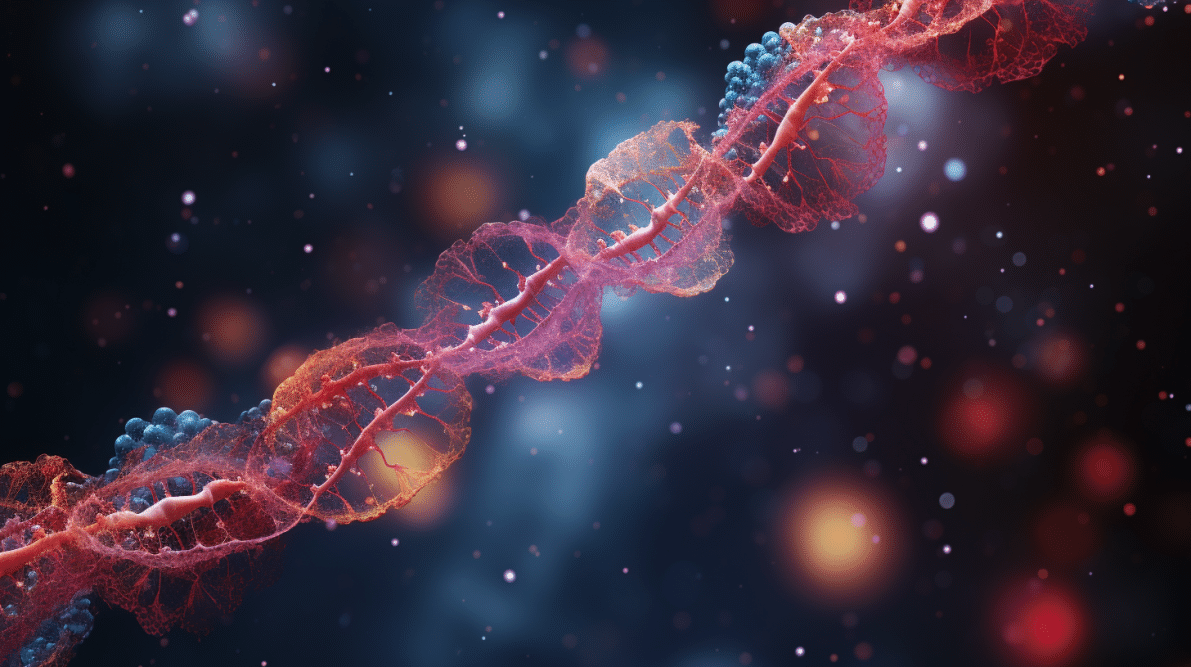Attention-deficit/hyperactivity disorder (ADHD) is one of the most common neurodevelopmental disorders, affecting around 5% of children and 2.5% of adults worldwide.
The core symptoms are inattention, hyperactivity, and impulsivity that interfere with normal functioning and development.
ADHD is associated with difficulties in school, work, and social relationships, as well as increased risk for other mental health conditions, accidental injuries, and chronic health issues.
While ADHD tends to run in families, suggesting genetic components, no single gene has been identified as causing ADHD.
Instead, it likely involves a complex interplay of multiple genes and environmental factors affecting brain development and function.
Scientists are searching for biomarkers – biological indicators – that could help with earlier diagnosis, better treatments, and overall improved understanding of what causes ADHD.
Key Facts:
- ADHD symptoms often appear around ages 4-5 but may go unnoticed until demands exceed capacities.
- Hyperactivity symptoms tend to appear earlier than inattention.
- ADHD has three main presentations: hyperactive, inattentive, and combined types.
- Diagnosis relies on history of impairing symptoms, as there is no definitive medical test yet.
- ADHD is highly heritable, though likely caused by many gene variants versus one specific gene.
- Research is exploring biomarkers like patterns of brain waves, metabolites, and microRNAs.
Source: BMC Psychiatry 2023 Sep 25
The Challenges of Studying ADHD
Several factors make studying and diagnosing ADHD challenging.
First, symptoms can go unnoticed or be mistaken as normal developmental variations in preschoolers.
Hyperactivity and impulsivity tend to appear around ages 4-5 and peak around ages 7-8.
Inattentive symptoms often emerge later, around ages 8-9.
But if a child has a high IQ or their environment is highly structured, the impacts from inattention may be masked until schoolwork suffers or social problems arise.
Second, ADHD has three main clinical presentations: predominantly inattentive, predominantly hyperactive-impulsive, and combined type.
The brain biology likely differs across the types.
Most research though has not distinguished between them.
Third, boys tend to be diagnosed more often than girls.
But this may reflect gender biases and expectations versus actual differences in symptom frequency or severity.
Girls may exhibit more covert symptoms or use compensatory strategies that mask impairment.
Underdiagnosis of girls remains a concern.
Finally, there is no definitive medical test for ADHD yet.
Diagnosis relies on history of developmentally inappropriate and impairing levels of symptoms.
Brain imaging and electrical tests can rule out other conditions but cannot diagnose ADHD itself.
The lack of biomarkers creates uncertainty and frustration for many families seeking help.
The Genetic & Environmental Puzzle of ADHD
Twin studies estimate ADHD’s heritability around 70-80%, meaning genetics account for most of the risk.

But no single major risk gene has been found yet. Instead, many common gene variants each make small contributions, interacting in complex ways.
The environment also plays a role, starting as early as the prenatal period.
Exposure to toxic chemicals, alcohol or tobacco smoke, maternal stress, premature birth, low birth weight, and deficiencies of certain nutrients may all disrupt normal brain development.
Exactly how genes and environment combine to result in ADHD remains unclear.
The disorder involves imbalances in brain chemicals like dopamine and problems with the structure and connections between brain regions involved in attentiveness, inhibition, and self-control.
Differences in the frontal lobes, basal ganglia, cerebellum, and the networks between these areas have been found.
ADHD often occurs alongside other neurodevelopmental or mental health conditions like learning disabilities, autism spectrum disorder, anxiety, and depression.
Overlapping symptoms and shared genetic risks likely account for much of this co-occurrence.
Understanding these relationships provides clues about the underlying biology.
Biomarkers Could Aid in ADHD Diagnosis and Treatment
Without a definitive medical test, mental health professionals must rely on subjective history and observation of symptoms when diagnosing ADHD.
This leads to frequent misdiagnoses and frustration for families.
Children may struggle for years before their needs are recognized. But even younger ages are harder to evaluate accurately.
Some biomarkers detectable very early in life could revolutionize diagnosis and treatment.
Ideally, biomarkers could serve several purposes:
- Aid diagnosis, especially in borderline or unclear cases
- Identify children at risk early for preventive steps
- Predict how symptoms will progress over time
- Indicate optimal treatment options and dosing
- Monitor treatment effectiveness and remission status
- Distinguish ADHD from overlapping conditions
- Reveal biological pathways and targets for new therapies
Multiple Types of Biomarkers Under Study
Because ADHD likely stems from many interacting biological and environmental factors, researchers doubt any single biomarker will be adequate.
Instead, panels or combinations may be needed. Many different types of biomarkers are under investigation, including:
- Brain imaging – Structural and functional MRI can reveal connectivity patterns and activation differences in ADHD brains, though findings vary across studies.
- Electrical signals – EEG shows atypical brain wave patterns and responses to stimuli that distinguish ADHD with moderate accuracy.
- Cognition – Neuropsychological tests of executive functioning like working memory, impulse control, and mental flexibility reveal characteristic ADHD weaknesses.
- Genetics – No genes definitively cause ADHD yet, but common variants associated with small risks are being identified through large genome-wide studies.
- Proteins – Blood proteins related to inflammation, immunity, growth factors, and iron regulation have shown subtle differences in some with ADHD.
- Metabolites – Altered amino acid, antioxidant, and carbohydrate metabolism found in ADHD may indicate oxidative stress.
- MicroRNAs – These small non-coding RNAs regulating gene expression are promising new candidates as diagnostic biomarkers.
The Emerging Role of microRNAs
MicroRNAs (miRNAs) are small strands of RNA that do not code for proteins themselves but regulate gene expression.
By binding to messenger RNAs, they can block or reduce production of proteins from those genes.
Nearly every biological process involves miRNAs.
Many are active during fetal development and appear crucial for normal brain development.
Growing evidence links altered miRNA levels to various neurological and psychiatric disorders like autism, schizophrenia, Parkinson’s disease, and ADHD.
Because miRNAs are present in accessible tissues like blood, they are easy to measure.
Distinct miRNA signatures in ADHD could serve as accurate, non-invasive biomarkers.
Over 20 human studies have associated specific miRNAs found in blood, saliva, or brain tissue with ADHD.
However, most studies were small and looked at different miRNAs using varying methods.
Larger studies covering wider ranges of miRNAs are needed to validate findings.
A New Study Finds Links Between miRNAs and ADHD Symptoms
A 2022 study published in BMC Psychiatry aimed to identify miRNA biomarkers for ADHD traits and symptoms.
It examined over 300 different miRNAs in blood samples from over 1100 children aged 5-12 years old across 6 population studies in Europe.
The children completed computer-based cognitive tests and parents completed standard questionnaires rating their child’s ADHD-related behaviors.
The researchers then analyzed which miRNAs correlated with scores on the cognitive tests and behavior ratings.
No associations were found with the cognitive test results.
However, levels of 29 different miRNAs correlated with parent-rated hyperactivity symptoms.
Another 3 miRNAs correlated with inattention symptoms.
Excitingly, over half of the miRNAs linked to hyperactivity had been identified in previous ADHD research.
Many are known to be involved in brain development and function.
The study provides stronger evidence that these miRNAs play a role in ADHD and could serve as useful diagnostic biomarkers.
However, there are some important limitations…
- No clinical diagnosis of ADHD – only dimensional traits in a general population
- Small differences expected with a continuous versus case-control design
- Modest sample size when dividing into groups
- Variation across the 6 study sites and countries
So the findings, while promising, need further confirmation.
Replicating results in diagnosed clinical groups, rather than dimensions in the general population, will be important next steps.
Key miRNAs Identified
Let’s take a closer look at some of the key miRNAs the study found related to ADHD symptoms:
- MiR-19a & miR-19b – Part of the miR-17/92 cluster involved in early development. Linked to neuronal development and ADHD in previous studies.
- MiR-24 & miR-92a – Also in the miR-17/92 cluster. Implicated in brain development and plasticity.
- Let-7 family – Crucial developmental regulators in the brain. Let-7c influences neuronal signaling. Others associated with ADHD before.
- MiR-103 & miR-107 – Regulate cell division, stress response; linked to neurodegenerative disease.
- MiR-181 family – Important for embryo and brain development. Associated with other developmental disorders.
Many other miRNAs they identified belong to families with known roles in brain development and function.
The more their findings agree with past research, the more likely the results reflect real biological relationships versus chance occurrences.
Replicating the findings in people clinically diagnosed with ADHD will be an important next step.
But the study adds to growing evidence that miRNA biomarkers can help reveal ADHD’s complex neurobiology and may someday improve diagnosis and treatment.
ADHD Treatment – Current and Future
While no medical cure for ADHD exists, currently available treatments can help reduce symptoms and improve functioning.
Behavioral therapy teaches organization, time management, and social skills.
Parent training provides strategies for managing behavior at home.
Academic supports at school maximize learning potential.
Stimulant medications like methylphenidate (Ritalin) and amphetamines (Adderall) are the most common pharmacologic treatments.
They increase dopamine signaling in the frontal cortex and often quickly reduce hyperactivity, impulsivity, and inattention.
However, side effects include appetite loss, sleep problems, anxiety, and growth delay.
And long-term outcomes remain disappointing for many treated with stimulants as children.
Better tailored and targeted treatments are needed.
Expanding knowledge of ADHD’s biology and identifying biomarkers will enable more personalized medicine approaches.
If distinct biomarkers can predict who will respond best to which treatment, outcomes could improve dramatically.
Research continues to uncover more of ADHD’s complex neurobiology.
Identifying reliable biomarkers for diagnosis and treatment selection is a top priority.
Exciting progress is happening, particularly with brain imaging patterns and miRNA signatures.
Replication in large clinical samples is still needed.
But biomarkers may soon transition from research toward clinical utility, providing long-awaited answers for those impacted by ADHD.
References
- Study: Blood miRNA levels associated with ADHD traits in children across 6 European birth cohorts
- Authors: Lene B Dypas et al. (2023)







